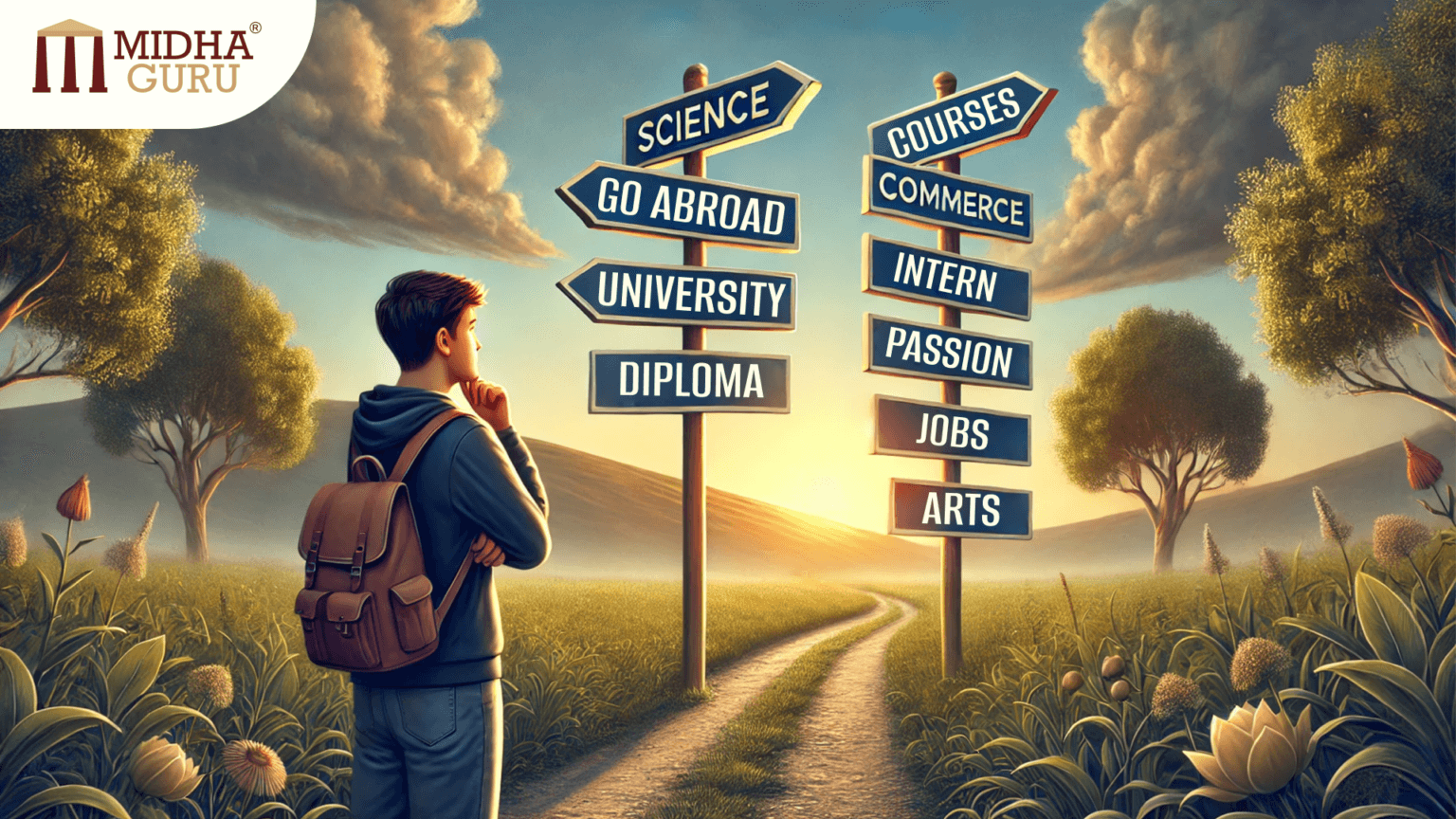Education System
Choosing the right career path after class 10

Introduction
At the end of grade 10, students are generally faced with an important career choice concerning which academic or vocational track to pursue thereafter. It is one choice that greatly impacts their next education journey, even further ahead, their jobs. This is a well-rounded look at what students will find to pursue after passing grade 10:
The Best Stream for Post Class 10 Education : Class 11 and Class 12
The majority of students want to join the higher secondary school in which he has to choose the right stream according to the interest of the students and career option. Available Main Streams:
a) Science Stream
Subjects available here are Physics, Chemistry, Mathematics ( PCM ) or Biology ( PCB) and English, as an elective student can take an extra subject like Computer Science, Physical Education, etc.
Career: PCM will provide entrance opportunities into Engineering, Architecture, computer Science, so forth in Physics/Mathematics courses.
PCB: Medicine, Dentistry, Pharmacy, Biotechnology, or other health and life sciences fields.
Who Should Choose This: Students interested in pursuing careers in engineering, medicine, research, or technical fields.
b) Commerce Stream
Subjects Offered: Accountancy, Business Studies, Economics, Mathematics or Informatics Practices, and English.
Career Paths: Chartered Accountancy (CA), Company Secretary (CS), Business Management, Finance, Economics, or careers in banking and entrepreneurship.
Who Should Choose This: Students interested in business, finance, economics, and management careers.
c) Arts/Humanities Stream
Subjects Taught: History, Political Science, Geography, Psychology, Sociology, English, and optional subjects like Economics or a language.
Career Opportunities: Careers in law, civil services, journalism, teaching, psychology, social work, or creative fields such as design, music, or literature.
Who Should Choose This: Students interested in social sciences, humanities, arts, or careers that involve creativity and analysis.
Diploma Courses
Diplomas can also be undertaken in cases of students who want to join skill-based education after their 10th standard. As most diploma courses are lesser years compared to traditional secondary schooling, they lead right away to jobs or advanced study.
Popular Diploma Courses
Engineering Diplomas-Mechanical, Electrical and Civil, etc
Diploma in Computer Science, fashion Design, Hotel management, Animation and multimedia.
Advantages: such courses provide practical training which equips students for careers-specific, and often leave those who take the regular road job-ready much earlier.
Vocational Courses
Vocational courses provide skill-based training in such a manner that prepares pupils for specific trades or particular careers. Such courses are well suited for students who have more to do with practical knowledge over theoretical study.
Examples of Vocational Courses
– ITI Courses Industrial Training Institute: Training for example in electrician work plumbing carpentry computer hardware and many more.
Paramedical Courses: These include lab technician training, nursing assistant, and medical transcription.
Advantages: Such courses provide specialized training and a faster way to the workplace.
Polytechnics
Polytechnic institutes provide diploma courses in engineering and technology, similar to the courses available after the science stream in higher secondary education.
Duration: Generally 3 years.
Outcome: Students can start work in their profession or laterally enter the second year of a B.E. or B.Tech.
Open Schooling
Open schooling is for people who seek flexibility in education. National Institute of Open Schooling provides the flexibility to pursue further studies while attending to other personal or professional obligations.
Why To Choose This-
Open schooling suits students who require a learning environment that is more lenient as they may be interested in other activities like sports, arts, etc.
Result
The certificate issued in open schooling is accepted everywhere, and the student can progress further or even develop the career.
Certification Courses for Short Duration
There are many short certification courses available for students willing to learn new skills but cannot enroll in a full-time program. These courses add further knowledge and employability skill in the concerned field of interest.
Examples
Web designing
Graphic designing
General computer courses
Language course (to learn any new foreign language)
Benefits: You can attend these courses parallel with regular studies also. Which can add values to your resume.
How to Pursue the Right Career
Assess Your Areas of Interest and Strength
Find something to focus on: What would you like to study about, and what are activities/hobbies you enjoy?
Make your choice by taking a career aptitude test or, alternatively, talking to a career counselor.
Investigate Career Options
Also read: A new age career social media influencing
The long-term career prognosis associated with your chosen field. Network in this field, or through internet research, explore related employment opportunities and salaries.
Talk to parents and teachers:
Seek advice from parents and teachers who know your strengths and can offer valuable input about which path might suit you best.
Plan for the Future
Long-term goals should be in mind. If you wish to become a doctor, it is important to choose the science stream with biology. If you see yourself as a business owner, then the commerce stream would do.
Conclusion
One of the most important decisions for a student’s future is choosing the right path after 10th grade. Whichever subjects you choose may be science, commerce or arts, But the key is that you should be interested in your choice and its relevance to your strengths. With this kind of choice, you would lay the perfect foundation for a fulfilling career and successful future.
